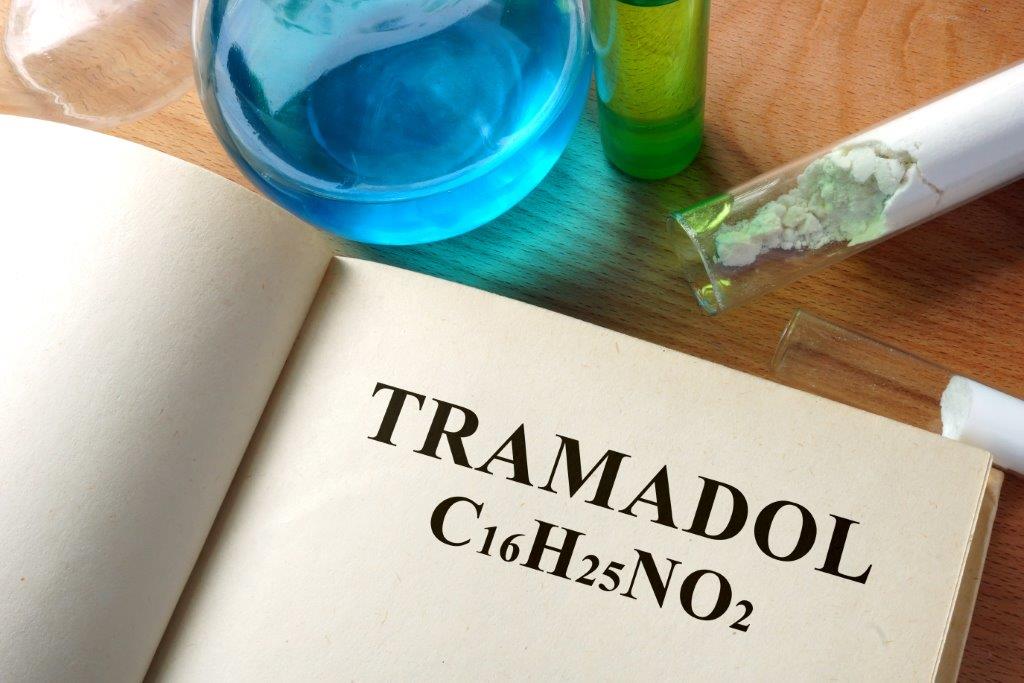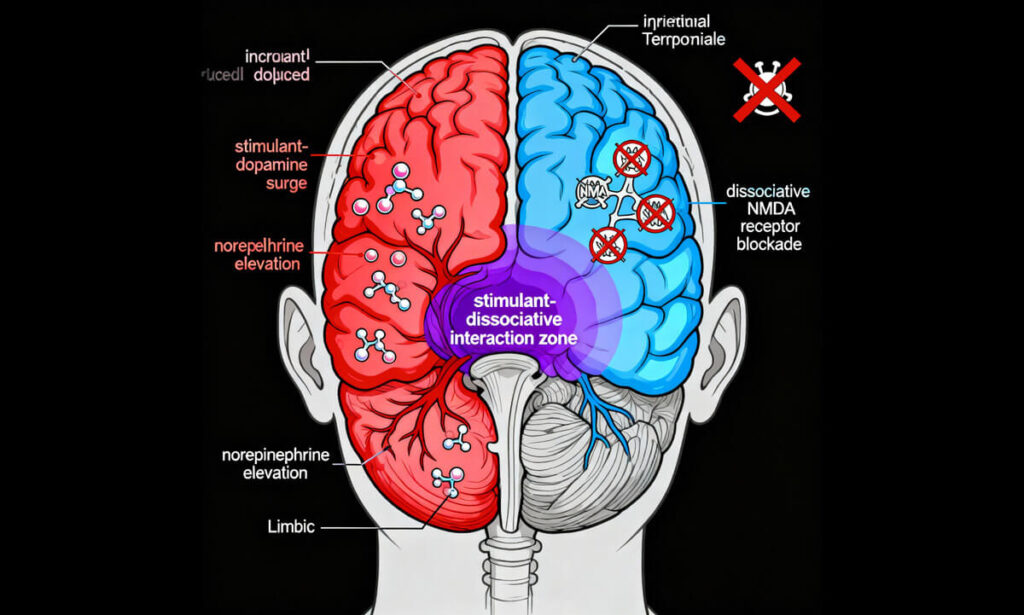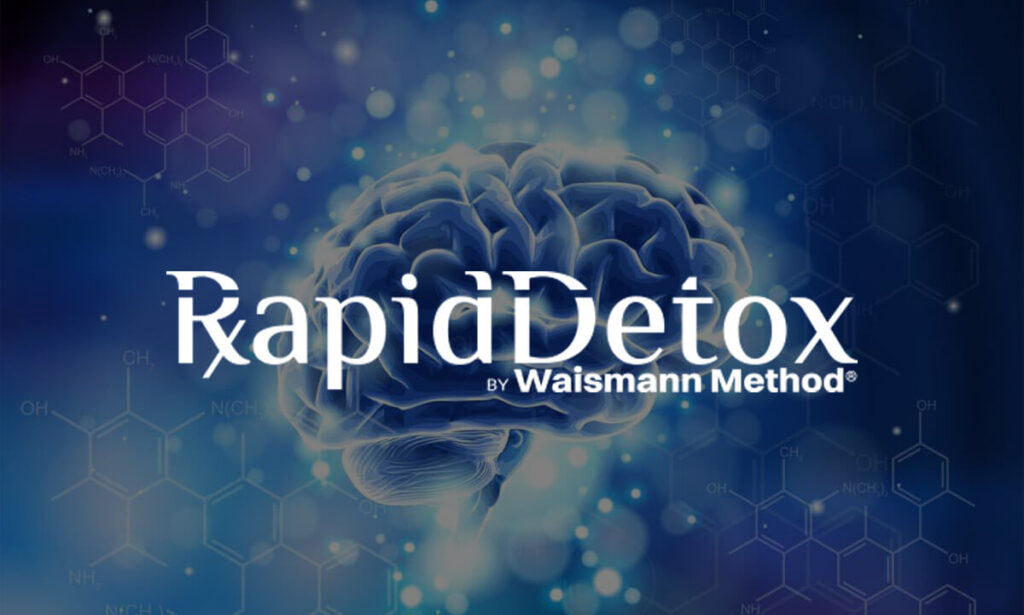What Is Tramadol Rapid Detox? Understanding Modern Medical Detoxification
Rapid Tramadol detox represents one of the most advanced medical procedures for safely managing tramadol withdrawal under controlled clinical conditions. This comprehensive guide provides essential training information, clinical awareness, and evidence-based protocols for healthcare professionals and patients seeking to understand this critical detoxification process.
How Does Tramadol Rapid Detox Work? Medical Protocol Training
Rapid tramadol detoxification under medical sedation allows patients to bypass the most uncomfortable aspects of withdrawal while maintaining complete medical safety. This advanced procedure requires specialized training and certified medical facilities to ensure optimal outcomes.
The Science Behind Tramadol Rapid Detox
Unlike traditional opioids, tramadol affects both opioid receptors and neurotransmitter reuptake, requiring specialized rapid detox protocols that address:
- Opioid Receptor Blockade: Using naloxone and naltrexone to safely clear tramadol from receptors
- Serotonin/Norepinephrine Management: Specialized protocols for tramadol’s unique SNRI properties
- Cardiovascular Monitoring: Continuous cardiac surveillance during rapid detox procedures
- Neurological Assessment: Specialized monitoring for tramadol’s CNS effects
Standard Tramadol Rapid Detox Protocol Training
Day 1: Medical Evaluation and Stabilization
Comprehensive health assessment forms the foundation of safe tramadol rapid detox:
- Board-certified physician consultation and medical history review
- Cardiology evaluation for tramadol’s cardiovascular effects
- Complete laboratory analysis including liver and kidney function
- Chest X-rays and EKG monitoring setup
- Pre-medication protocols to prevent withdrawal onset
- Patient education and informed consent procedures
Day 2: Rapid Tramadol Detox Procedure
The core rapid detoxification process requires intensive medical monitoring:
- Transfer to private ICU facility with specialized monitoring equipment
- Anesthesia induction by qualified anesthesiologists with rapid detox training
- Continuous vital sign monitoring during tramadol withdrawal acceleration
- Medication administration to clear tramadol from opioid receptors
- Specialized protocols for managing tramadol’s SNRI withdrawal effects
- Post-procedure recovery monitoring in ICU setting
Day 3: Medical Assessment and Naltrexone Protocol
Post-detox stabilization and craving management:
- Medical evaluation for successful tramadol elimination
- FDA-approved Vivitrol® (naltrexone) injection when medically appropriate
- Patient education on naltrexone’s 28-day opioid blocking effects
- Discharge planning and aftercare coordination
Days 3-7: Recovery Transition and Medical Support
Supervised recovery with continued medical oversight:
- Transfer to specialized recovery facility for continued monitoring
- 24-hour medical supervision during adjustment period
- Transitional medications for comfort and stability
- Patient education on long-term recovery strategies
Understanding Tramadol: Essential Clinical Training Information
What Is Tramadol? Pharmacological Profile for Medical Professionals
Tramadol (Ultram, ConZip, Ryzolt) is a synthetic opioid analgesic with unique pharmacological properties that distinguish it from traditional opioids and require specialized rapid detox approaches.
Key Tramadol Classification Data:
| Property | Details | Rapid Detox Implications |
|---|---|---|
| DEA Schedule | Schedule IV Controlled Substance | Lower abuse potential but still requires medical detox protocols |
| Mechanism | Opioid receptor agonist + SNRI properties | Dual-pathway withdrawal requires specialized rapid detox techniques |
| Half-life | 6-7 hours (active metabolite: 7-9 hours) | Affects rapid detox timing and medication protocols |
| Metabolism | Hepatic via CYP2D6 and CYP3A4 | Genetic variations affect rapid detox medication dosing |
Tramadol’s Unique Withdrawal Profile: Training Essentials
Tramadol withdrawal differs significantly from traditional opioids due to its dual mechanism of action. Medical professionals require specialized training to recognize and manage these unique withdrawal characteristics during rapid detox procedures.
Tramadol-Specific Withdrawal Symptoms Requiring Specialized Rapid Detox Protocols:
Traditional Opioid Withdrawal Symptoms:
- Muscle aches and joint pain
- Runny nose and excessive tearing
- Nausea, vomiting, and diarrhea
- Dilated pupils and sensitivity to light
- Sleep disturbances and restlessness
- Temperature regulation issues (chills/sweating)
SNRI-Related Withdrawal Symptoms (Unique to Tramadol):
- Brain zaps: Electrical sensation symptoms
- Severe anxiety and panic attacks
- Mood instability and depression
- Cognitive difficulties and confusion
- Heightened emotional sensitivity
- Potential seizure risk (requires specialized monitoring)
Tramadol Addiction and Tolerance: Clinical Awareness Training
Understanding tramadol’s addiction potential is crucial for effective rapid detox planning. Recent clinical research reveals important insights about tramadol dependence patterns that inform modern rapid detox protocols.
Clinical Research Findings on Tramadol Addiction:
- DEA Statistics: 3.2 million Americans have used tramadol for non-medical purposes
- GABA System Impact: Studies in Drug and Alcohol Dependence show tramadol’s adverse effects on GABA neurotransmitter pathways
- Tolerance Development: Faster tolerance development compared to traditional opioids due to dual-pathway action
- Cross-Tolerance: Limited cross-tolerance with other opioids affects rapid detox medication protocols
Tramadol Rapid Detox Benefits: Clinical Outcomes and Training Data
Why Choose Rapid Tramadol Detoxification? Evidence-Based Advantages
Clinical data consistently demonstrates superior outcomes for tramadol rapid detox compared to traditional withdrawal management. Healthcare professionals and patients benefit from understanding these evidence-based advantages.
Tramadol Rapid Detox vs. Traditional Detox Methods:
| Outcome Measure | Rapid Tramadol Detox | Traditional Detox |
|---|---|---|
| Completion Rate | 95-100% success rate | 30-50% completion rate |
| Duration | 2-7 days total process | 7-14 days acute withdrawal |
| Comfort Level | Minimal conscious withdrawal discomfort | Full conscious experience of withdrawal |
| Medical Safety | Continuous ICU monitoring | Limited medical supervision |
| Seizure Prevention | Specialized protocols for tramadol’s seizure risk | Standard seizure precautions |
Clinical Advantages of Tramadol Rapid Detox Training
Medical Safety Benefits:
- Continuous Monitoring: ICU-level care throughout critical withdrawal period
- Seizure Prevention: Specialized protocols for tramadol’s unique seizure risk profile
- Cardiac Safety: Monitoring for tramadol’s cardiovascular effects during withdrawal
- Respiratory Support: Immediate intervention capability for any breathing difficulties
Patient Comfort Benefits:
- Unconscious Withdrawal: Patients sleep through the most difficult withdrawal symptoms
- Reduced Anxiety: Elimination of anticipatory anxiety about withdrawal discomfort
- Faster Recovery: Accelerated return to normal daily functioning
- Psychological Benefits: Reduced trauma associated with withdrawal experience
Long-term Success Benefits:
- Higher Completion Rates: Nearly 100% completion vs. 30-50% for traditional methods
- Reduced Relapse Risk: Successful detox completion improves long-term recovery outcomes
- Naltrexone Integration: Seamless transition to opioid blocking medication
- Confidence Building: Successful rapid detox improves patient confidence in recovery
Tramadol Rapid Detox Safety Protocols: Advanced Medical Training
Patient Selection Criteria for Tramadol Rapid Detox
Proper patient selection is crucial for tramadol rapid detox success and safety. Medical professionals require comprehensive training in evaluation protocols to identify appropriate candidates.
Ideal Candidates for Tramadol Rapid Detox:
- Medical Stability: Patients with stable cardiovascular and respiratory function
- Tramadol Dependence: Confirmed physical dependence on tramadol requiring medical detox
- Failed Traditional Detox: Previous unsuccessful attempts with outpatient or traditional inpatient detox
- Professional Requirements: Patients needing rapid return to work or family responsibilities
- Anxiety About Withdrawal: Patients whose fear of withdrawal prevents detox attempts
Medical Contraindications Requiring Alternative Approaches:
- Severe Cardiac Disease: Unstable angina, recent MI, or severe heart failure
- Respiratory Compromise: Severe COPD, sleep apnea, or respiratory depression
- Seizure Disorders: Uncontrolled epilepsy or seizure history (requires specialized protocols)
- Psychiatric Instability: Active psychosis or severe untreated mental illness
- Pregnancy: Alternative protocols required for maternal and fetal safety
Risk Management in Tramadol Rapid Detox: Professional Training
Comprehensive risk management protocols ensure patient safety during tramadol rapid detox procedures. Medical teams require specialized training in these evidence-based safety measures.
Pre-Procedure Risk Assessment:
- Comprehensive Medical History: Including all medications, supplements, and medical conditions
- Physical Examination: Focused on cardiovascular, respiratory, and neurological systems
- Laboratory Testing: CBC, comprehensive metabolic panel, liver function, coagulation studies
- Cardiac Evaluation: EKG, echocardiogram if indicated, cardiology consultation
- Anesthesia Risk Assessment: ASA classification and specialized anesthesia planning
Intra-Procedure Monitoring Protocols:
- Continuous Cardiac Monitoring: Multi-lead EKG with arrhythmia detection
- Respiratory Monitoring: Capnography, pulse oximetry, and ventilation assessment
- Hemodynamic Monitoring: Blood pressure, heart rate, and perfusion indicators
- Neurological Monitoring: Sedation depth and seizure activity surveillance
- Temperature Management: Core temperature monitoring and thermal regulation
Post-Procedure Recovery Protocols:
- Extended ICU Monitoring: Minimum 24-hour intensive care observation
- Withdrawal Symptom Assessment: Standardized scales for comfort evaluation
- Complication Prevention: Protocols for nausea, dehydration, and discomfort
- Discharge Planning: Comprehensive aftercare coordination and patient education
Professional Training Resources for Tramadol Rapid Detox
Medical Professional Education and Certification
Proper training is essential for safe and effective tramadol rapid detox implementation. Healthcare professionals should seek comprehensive education in these specialized procedures.
Core Training Components for Medical Teams:
- Tramadol Pharmacology: Understanding unique dual-pathway mechanisms
- Withdrawal Management: Protocols for both opioid and SNRI withdrawal symptoms
- Anesthesia Protocols: Specialized sedation techniques for rapid detox
- Emergency Management: Protocols for complications and adverse events
- Patient Selection: Evidence-based criteria for candidate evaluation
- Aftercare Planning: Integration with long-term recovery programs
Continuing Education and Professional Development
Tramadol rapid detox protocols continue to evolve with advancing medical knowledge. Healthcare professionals benefit from ongoing education in this specialized field.
Recommended Professional Development Areas:
- Latest Research: Current studies on tramadol withdrawal and rapid detox outcomes
- Technology Advances: New monitoring equipment and medication protocols
- Safety Updates: Emerging safety data and protocol modifications
- Patient Care Improvements: Enhanced comfort measures and recovery protocols
Tramadol Rapid Detox Awareness: Patient and Family Education
Understanding Treatment Options: Informed Decision Making
Patients and families benefit from comprehensive education about tramadol rapid detox options. Understanding the procedure, benefits, and alternatives enables informed healthcare decisions.
Key Information for Patients Considering Tramadol Rapid Detox:
- Procedure Overview: What happens during rapid tramadol detoxification
- Success Rates: Clinical data on completion and long-term outcomes
- Safety Profile: Risks, benefits, and safety protocols
- Alternative Options: Other detox methods and treatment approaches
- Aftercare Requirements: Post-detox recovery and support needs
- Cost Considerations: Financial aspects and insurance coverage
Family Support and Education
Family involvement improves tramadol rapid detox outcomes and long-term recovery success. Comprehensive family education supports both patient and family wellbeing.
Family Education Components:
- Addiction Understanding: Education about tramadol dependence and withdrawal
- Procedure Support: How families can support patients through rapid detox
- Recovery Planning: Long-term support strategies and resources
- Communication Skills: Effective ways to discuss addiction and recovery
- Self-Care: Maintaining family health during patient recovery
Clinical Research and Evidence: Tramadol Rapid Detox Outcomes
Current Research on Tramadol Rapid Detox Effectiveness
Ongoing clinical research continues to validate tramadol rapid detox as a safe and effective treatment approach. Healthcare professionals and patients benefit from understanding current evidence and research trends.
Key Research Findings:
- Success Rates: Multiple studies report 95-100% completion rates for properly administered tramadol rapid detox
- Safety Outcomes: Low complication rates when performed in appropriate medical settings
- Patient Satisfaction: High satisfaction scores related to comfort and procedure experience
- Long-term Outcomes: Improved recovery rates compared to traditional detox methods
- Cost Effectiveness: Reduced overall treatment costs due to higher success rates
Emerging Research Areas
Current research initiatives continue to improve tramadol rapid detox protocols and outcomes. Areas of active investigation include:
- Genetic Factors: How genetic variations affect tramadol metabolism and detox protocols
- Psychological Outcomes: Mental health benefits of rapid vs. traditional detox
- Technology Integration: Advanced monitoring and medication delivery systems
- Personalized Protocols: Individualized approaches based on patient characteristics
- Long-term Follow-up: Extended outcome studies for continuous improvement
Frequently Asked Questions About Tramadol Rapid Detox
What is rapid tramadol detox and how does it work?
Tramadol rapid detox is a medical procedure that uses sedation to help patients withdraw from tramadol safely and comfortably. During the procedure, patients are sedated while medications accelerate the withdrawal process, allowing them to bypass conscious experience of withdrawal symptoms.
How long does rapid detox for Tramadol take?
The complete tramadol rapid detox process typically takes 5-7 days, including pre-procedure evaluation, the rapid detox procedure itself (performed under sedation), and post-procedure recovery time in a supervised medical setting.
What is the success rate of rapid detox?
Clinical studies report success rates of 95-100% for tramadol rapid detox completion when performed by qualified medical teams in appropriate hospital settings. This is significantly higher than traditional detox methods.
Is tramadol rapid detox safe?
When performed by qualified medical professionals in accredited hospitals, tramadol rapid detox has an excellent safety profile. Continuous monitoring and specialized protocols address tramadol’s unique withdrawal characteristics.
Who is a candidate for rapid detoxification?
Ideal candidates include medically stable patients with tramadol dependence who have failed traditional detox methods or need rapid return to normal functioning. Comprehensive medical evaluation determines candidacy.
What happens after tramadol rapid detox?
Post-detox care includes medical monitoring, naltrexone therapy when appropriate, and transition to continued recovery support. Many patients receive Vivitrol® injections to prevent relapse during early recovery.
Does insurance cover tramadol rapid detox?
Insurance coverage varies by provider and policy. Many insurance plans cover medically necessary detoxification procedures when performed in hospital settings by qualified medical teams.
How does tramadol rapid detox differ from regular detox?
Tramadol rapid detox uses medical sedation to bypass conscious withdrawal symptoms, while traditional detox requires patients to experience withdrawal symptoms while awake. Rapid detox also provides intensive medical monitoring throughout the process.
Advancing Tramadol Rapid Detox Through Education and Training
Tramadol rapid detox represents a significant advancement in addiction medicine, offering patients a safe, effective, and comfortable path to recovery from tramadol dependence. Through comprehensive professional training, patient education, and continued clinical research, this specialized procedure continues to improve outcomes for individuals struggling with tramadol addiction.
Key Takeaways for Healthcare Professionals:
- Specialized Training Required: Tramadol’s unique pharmacology requires specialized rapid detox protocols
- Evidence-Based Benefits: Clinical data supports superior outcomes compared to traditional detox methods
- Safety Protocols Essential: Proper patient selection and monitoring ensure optimal safety outcomes
- Continuous Education Important: Ongoing training keeps medical teams current with best practices
Key Takeaways for Patients and Families:
- Effective Option Available: Tramadol rapid detox offers a proven path to recovery
- Medical Safety Priority: Procedure performed in hospital settings with intensive monitoring
- High Success Rates: Clinical data shows excellent completion and safety outcomes
- Comprehensive Care: Includes pre-procedure evaluation and post-procedure support
Important Notice: Educational Purpose
This comprehensive guide provides educational information about tramadol rapid detox procedures, protocols, and outcomes. It is designed for healthcare professional training and patient awareness. This information is not medical advice and should not substitute for professional medical consultation. Individuals considering tramadol rapid detox should consult qualified healthcare providers for personalized evaluation and treatment recommendations.
Sources:
Government Sources (Most Reliable):
- SAMHSA National Helpline: https://www.samhsa.gov/find-help/national-helpline
- NIDA Statistics: https://nida.nih.gov/research-topics/trends-statistics
- SAMHSA Emergency Department Data: https://www.samhsa.gov/data/sites/default/files/report_1966/ShortReport-1966.html
Medical Research Sources:
- NCBI Systematic Review: https://www.ncbi.nlm.nih.gov/pmc/articles/PMC7417126/
- Johns Hopkins Study: https://www.hopkinsmedicine.org/news/articles/2017/11/potentially-viable-detox-alternative
- StatPearls Medical Reference: https://www.ncbi.nlm.nih.gov/books/NBK537060/
Clinical Evidence Sources:
- Medscape Research: https://www.medscape.com/viewarticle/882926
- American Addiction Centers: https://americanaddictioncenters.org/opioids/tramadol/withdrawal-detox








